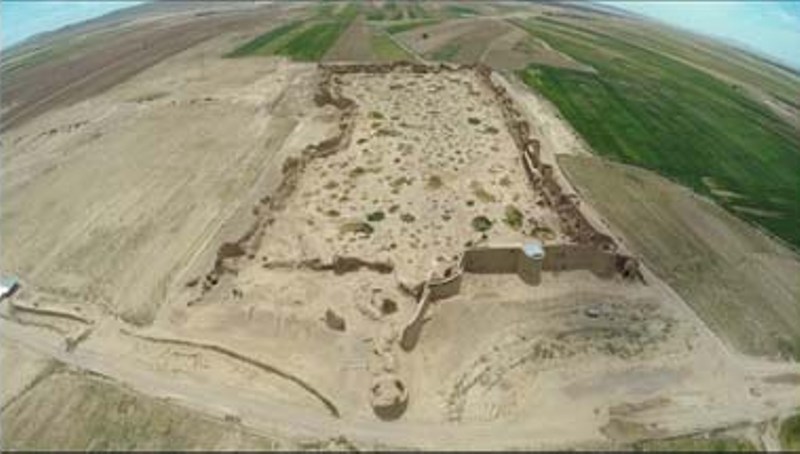
The explorations are underway in the complex of the Belqais city base in the two sections of inside the citadel and in Sharestan.
The Public Relations Office of the Research Institute of Cultural Heritage and Tourism (RICHT) quoted head of the base in the Belqais city as saying on Saturday that the purpose of the search within the citadel is recognizing and understanding the architecture of the internal part of the citadel and the spaces therein, creating a space for the site-museum for the inspection by the visitors, and also providing a place for the emergency and complementary protection inside the citadel.
“Exploring within the Sharestan area is conducted with the focus on Tappeh Menar with an aim of identifying its application and completing the possible structure of the mosque-school, some sections of which have been surfaced through archeological explorations in previous seasons,' he added.
The official said the span of the area is 200 hectares and according to historical documents, the city was flourishing before Islam and was conquered by the Muslims in the year 31 AH.
Based on archeological findings and historical references, Najafi said the oldest settlement in the historic city that has been identified so far, is related to the late Sassanid-early Islam era and living there continued up to the end of the Safavid period.
According to the archeologist, the city was completely ruined in the late Tahmasb (Tahmasp) II and the beginning of Nader Shah rule, 1131 AH, by the Afghans so that it lost its previous position and from that time gradually the legendary name Belqais was given to the ruins of the ancient city of Esfarayen.
The archeologist stated that the early archaeological activities were scientifically launched in the complex since 2007 and constantly continued each year.
Najafi noted that in the 8th season, archeological explorations which took place in the two citadel and Sharestan sections, inside the citadel remains of a brick structure with clay and lime mortar were discovered which were probably remains of a bath dating back to 8-7 AH which, after destruction, was used as a pool to reserve water.
Among other structures discovered in the explorations inside the citadel he referred to a water transfer system, the residential houses with stone foundations, adobe walls and stone pediment.
He further remarked that the other section of the research study which was conducted in Sharestan in the area known as Tappeh Menar was led to the discovery of a number of porches made with brick and plaster around the central courtyard which are presumably remains of the mosque-school of the Seljuk era.
According to the archeologist, parts of the structure of the building, including the porch, a corridor decorated with plaster work and remains of an entrance with brick pediment had been previously discovered in the course of archeological explorations.
9376**2050
Follow us on Twitter @IrnaEnglish
 solhkhabar | Peace International News Agency Peace International News Agency , Peace News , International Agency News of Peace
solhkhabar | Peace International News Agency Peace International News Agency , Peace News , International Agency News of Peace